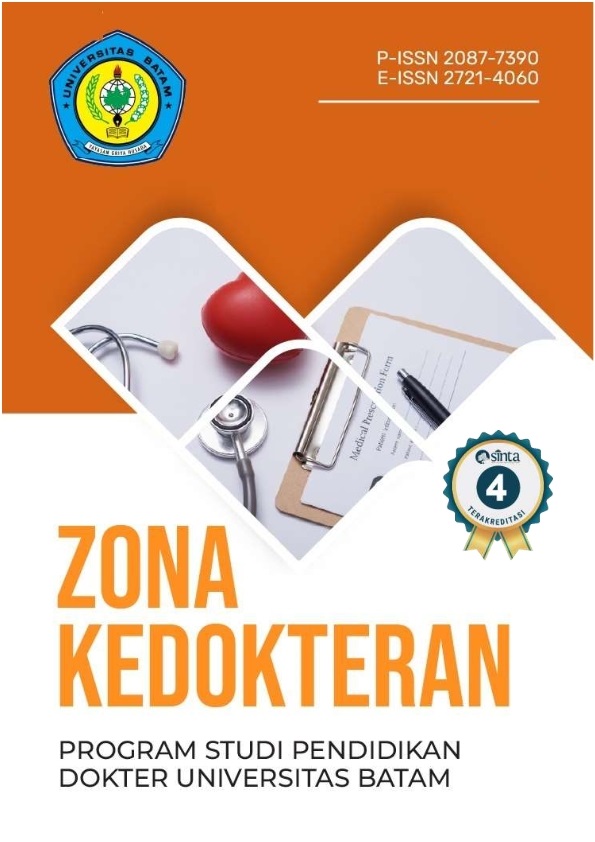HUBUNGAN RASIO LINGKAR PERUT-TINGGI BADAN DENGAN TES JALAN BERJARAK 6 MENIT PADA PASIEN SINDROM KORONER KRONIS DI RS HJ BUNDA HALIMAH BATAM: SEBUAH STUDI PENDAHULUAN
DOI:
https://doi.org/10.37776/zked.v15i3.1943Abstract
Abstract Background: Chronic coronary syndrome (CCS) is a leading cause of global morbidity and mortality, closely associated with central obesity. The waist-to-height ratio (WHtR) is a sensitive anthropometric indicator for detecting visceral fat distribution and cardiometabolic risk. Meanwhile, functional capacity can be assessed through the 6-minute walk test (6MWT), reflecting patients' ability to perform daily activities. However, few studies have examined the relationship between WHtR and 6MWT, particularly in CCS Objective: To determine the correlation between WHtR and 6MWT results in CCS patients at Hj. Bunda Halimah Hospital, Batam City. Methods: This pilot study with cross-sectional design involved 20 selected patients with consecutive sampling. All patients were given optimal CCS treatment and were chronic patients of cardiac outpatient clinic. Data were collected through anthropometric measurements (waist circumference and height) and 6MWT following standard protocol. Pearson’s correlation test was used to analyze the relationship between WHtR and 6MWT results. Results: Most respondents had central obesity with WHtR ≥ 0.5 (55%). The mean 6MWT distance was 448.10 m in the control group and 429.40 m in the intervention group (p<0.001). Pearson’s test revealed a significant negative correlation between WHtR and 6MWT (r = -0.719; p < 0.001). There was a significant negative relationship between WHtR and 6MWT results in CCS patient. Discussion and Conclusion: This study shows that a higher WHtR results in a shorter 6MWT distance, or lower functional capacity, in patients with CCS who have received optimal treatment. This suggests that a high WHtR indicates the presence of residual risk factors such as inflammation and ongoing oxidative stress. WHtR is not only a simple indicator for predicting functional capacity and cardiometabolic risk in this population, but also serves as a target for cardiac rehabilitation to improve the functional capacity. Keywords: Coronary artery disease; WHtR; 6-Minute Walk Test; functional capacity; central obesity.Downloads
Published
Issue
Section
License
Copyright (c) 2025 Surya Marthias, Shania Aulia Putri, Andi Ipaljri Saputra

This work is licensed under a Creative Commons Attribution-NonCommercial-ShareAlike 4.0 International License.






